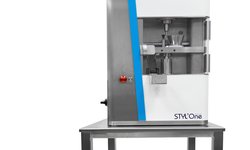Streamline early-stage development to reach the clinic faster
Streamlining early-stage pharmaceutical development is essential for accelerating the transition to clinical trials. Early-stage development establishes a solid foundation for successful trials by defining a clear quality target product profile (QTPP) and considering scalability to minimize downstream challenges. Preparing for this phase in advance helps smooth the transition from preclinical research to clinical trials.
Preclinical studies, which often involve animal testing, assess safety, pharmacokinetics, and pharmacodynamics, informing dose range and efficacy. These studies highlight potential risks and issues such as solubility, bioavailability, and stability. Addressing these challenges requires a phase-appropriate QTPP and simple, scalable formulations to avoid late-stage hurdles. Regulatory compliance is also crucial, as unapproved excipients or non-reproducible processes can delay approval.
A firm regulatory strategy, guided by experienced CDMO partners, is vital. While experienced pharmaceutical companies navigate early-stage development confidently, less experienced organizations may struggle. Understanding preformulation activities and the specific requirements for regulatory approval is crucial.
Proof of Concept (PoC) studies, supported by early-stage development, aim to produce initial evidence of a drug's potential efficacy. Continuous communication with regulatory bodies ensures clarity on expectations and approval pathways, facilitating smoother project progression.
Early-stage development also aligns partners on project goals, timelines, and deliverables, enabling effective collaboration. It provides opportunities to leverage new technologies and trends, enhancing development and regulatory strategies.
This phase is iterative, requiring continuous adjustments based on new data from preclinical and early clinical trials. This ongoing process ensures the optimization of formulations and manufacturing processes, aligning with regulatory requirements for safety, efficacy, and quality. Constant communication with regulatory agencies guides development steps positively, ensuring the project evolves efficiently.
Adapting to market dynamics, patient needs, and evolving medical knowledge is essential for maintaining relevance and competitiveness. Continuous product development allows for adjustments in response to changes in disease prevalence, treatment paradigms, and patient requirements.

Comments
No comments posted yet.
















